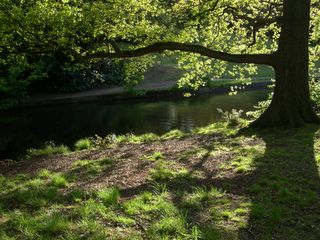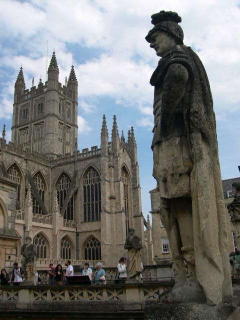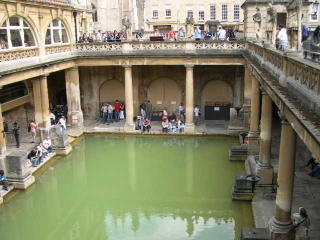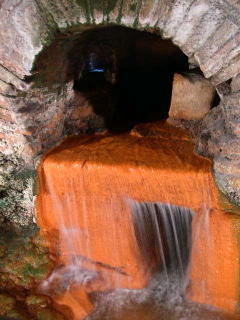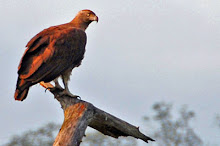Scotland
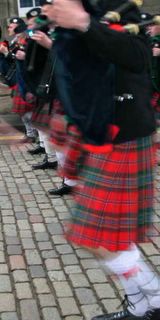
>>> Bagpipers on Edinburgh Royal Mile >>>
----
"Mr Watson, come here I want you."
Do those words ring a bell ? Well, how about this? –
“Elementary, My dear Watson!”
One real, the other fictional. One the most momentous and defining moment in history, of scientific inventions. The other, attributed to the most famous fictional sleuth. Coming from famous personalities, men of sharp minds, the way these famous words are connected, sounds like eerie coincidences- Watson features in both, and they both are assistants / sidekicks- One, of Alexander Graham Bell; The other of Sherlock Holmes, whose character was inspired by Dr Joseph Bell, professor of Medicine at University of Edinburgh where Conan Doyle studied to be a doctor. Dr Bell had many traits from which the character of the detective was derived.
Alexander Graham Bell and Arthur Conan Doyle were born and brought up in
On a windy drizzling ‘English summer’ morning in late May, we alighted from the Glasgow-Edinburgh bus, opposite Waverly railway station on
It’s a Victorian building. Room’s cozy. It’s overlooking an open meadow with some sorta makeshift golf course.
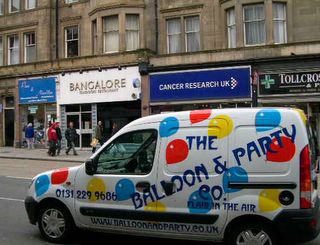
BANGALORE Tandoori Restaurant, Opp King's Theatre, Home St, Edinburgh. Had nothin to do with Bangalore as such, though menu intro proclaimed that it's a piece of bangalore recreated!. Duh.
Took an afternoon stroll towards the castle to the
Another interesting piece of history on the ramparts is The One O’ Clock Gun. Installed in 1861 to provide an accurate time signal, important especially for the mariners who could set their clocks/chronometers accurately before leaving the ports, which they would use it for scheduling and more importantly for navigation when out of sight of land- to find the longitude at sea, the navigator compares the local time aboard the ship (say, by observation of the sun) with the standard time carried on board the ship by an accurate chronometer.
After breathing in lots of history and bloody colonial battle-fields, once out of the castle, walking down the Royal Mile, it was time to smell some whisky at the Scotch Whisky Heritage Centre. The World’s oldest whisky distilled in 1937 was on display, with a bottle @ a kool £10,000. Glenfiddich brand Single Malt variety. Am no aficionado, in fact hate the taste, (and that of the beer. Prefer that of Wines.
For my Potter-manic kiddo friends, Wanted to get a shot of JKRowling’s favourite café where she used to spend time over a cuppa, writing the initial Harry Potter novels- she cudn’t write from the cozy comforts of home as she couldn’t afford to heat her flat. On my way, was browsing through souvenir shops and also trying to see if I can lay my hands on a £1 note anywhere, which is not available in England, but read somewhere that if you are lucky, might find one by Bank of Scotland if you ask around.
When chatted with a shop-keeper, got a hint of some Scottish words interspersed in his talk, and I asked more about it, he explained a bit- Scots say ‘Aye’ for yes, ‘huus’ for house, ‘heem’ for home, ‘I don’t niken’ for I don’t know’, ‘biyems’ for children etc. The words folks, wee are Scottish. Picked an English-bashing post card with long list of inventions by Scots and how tough it is for a plain Englishman to live without being so dependent on Scottish inventions!.
-To quote from Bill Bryson’s Notes from a Small Island,
“Scotland with her clever cherry-cheeked people, has churned out a rollcall of worthies far out of proportion to its modest size- Watt, Scott, Conan Doyle, Adam Smith, Alexander Graham Bell, Lord Kelvin, John Logie Baird, Charles Mackintosh, Stevenson, JM Barrie, Thomas Telford, Charles Rennie, Ian McCaskill, to name but a few. Among much else, we owe the Scots are whisky, raincoats, rubber wellies, bicycle pedal, telephone, tarmac, pencillin, understanding of the active principles of cannabis…”
Unquote.
Btw, I did find an old man wearing one o those Sherlock Holmes-style deerstalker hat (with flat curved parts that stick out /visor, one at the back and one at the front)
Out on the street again on the way to the café where Potter-mainc’s would want to have a dekko. This time I heard some bagpiper band starting off and rushed towards the sound. They were going towards the Castle thru the streets. Some kids , some old men, all in kilts, the bagpipers were good to watch and listen to.
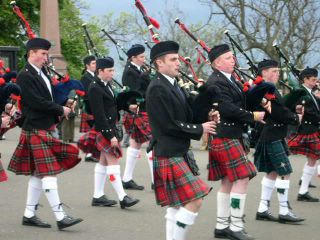
Bravehearts in Kilts, belting out Celtic music.. Bagpipers' band marching outa Edinburgh Castle. The question naturally popped out- what do Scots wear beneath kilts ? Traditionally its military regulation for Highland soldiers not to wear anything beneath, with some exceptions. But pretty strong winds provided the answer, most did wear stuff :).
Next day started off with the drive, straight outa
When entering the Inverness Youth Hostel, heard someone speaking in Mallu- later caught up with a small mallu gang of 6 students and rookies who are from Cochin, Kottayam, studying/working in Glasgow and Birmingham, they were out there for hiking on Ben Nevis (1344m) near Fort William. Later on the day, exploring the north of Inverness, passed by a very small town, Avoch (next to FortRose by the Moray Firth) with apparently no asians around, but there's a small take-away n Indian restaurant run by non-asians, and two Indian cooks were around. One, Hussain looking in his late 30s, from near my place back home. That was another surprise.
For the highland geography, you need to equip yourself with a wee bit of Gaelic words:

Cromarty, an idyllic small-town by the Cromarty Firth, xploring N of Inverness.
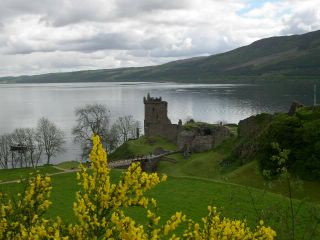
Urquhart Castle by the Loch Ness(of the monster fame), which is the largest body of fresh water in Britain, stretching around 37km with ~3.2km width
In two days, from Edinburgh to Inverness via Aviemore and then back to Edinburgh via Loch Ness and Glencoe, we passed by scores of Glens, Lochs, and Firth of Forth at Edinburgh, Moray Firth and Beauly Firth near Inverness and exploring further north into the small-town of Cromarty, had a very enjoyable drive along the Cromarty Firth, where I had a pit-stop for watching some shore-birds on their migratory pit-stop, from an RSPB hide. Oystercatchers, Dunlins and Mute swans, Common Gulls. That sums up my birding during the trip- almost zilch.
I'd been checking with the staff at YH about the places where highland cows can be seen, but reply always sounded like u may get to see on some highland slopes, they aren't common.. chances are less.. but do watch out.. might get lucky. On the third day afternoon, finally Lady luck smiled. They look something in between a cow and a yak, more appealing than a normal cow with long hair cascading over the eyes. With formidable horns and not giving any clue to its intentions behind the veiled face, I had to approach it pretty gingerly, respecting its space, mustering bold body language, but with each step, mentally preparing like a matador ready to run for the door :)
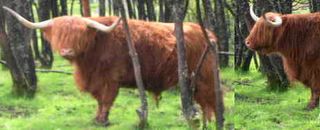
Highland Cow, near Ben Nevis. Consider yourself lucky if u get to see any highland cows.
On the way back from Inverness, after the uplifting drive along the edge of Loch Ness locked by hills in spring splendour, eagerness started knocking on my head, awaiting my first visit to a distillery- a Scotch one at that, in the very heart of highlands, at the foot of Ben Nevis, UK’s highest mountain at 1344m. The thought was intoxicating, and put the brain on overdrive, to soak-in the brewing tale of barley to the bottle. And the tale turned out to be more appealing than the taste, of The Bottled ‘Spirit of Scotland’.

Where Whisky brews. Ben Nevis Distillery, estd 1825 near Fort William.
It's at the foot of Ben Nevis, UK's highest mountain.
The word Whisky comes from Uisge beatha Gaelic for 'water of life', in time abbreviated and corrupted to 'whisky'. Here’s whisky jargon for the connoisseur.
The previous day on the way to Inverness, around the Cairngorm mountains, near Aviemore, wanted to take detour for watching the Ospreys at the RSPB nature reserve, at Loch Garten near Boat of Garten but there was no other birder in the pack and since Inverness was waiting for us to be explored, I didn’t want to foist birding upon rest of the folks eager to hit Inverness, though I cud be missing the rarest of chances to watch a Capercaillie.
Had dreamt of taking pics of Atlantic Puffins , clown of a bird, and visiting Bass Rock off the harbour, accessible by boat from Scottish Seabird Centre.
Like many outings, as far as Natural History is concerned, this too has left me with a petty grouse- that I couldn’t get myself into the proximity of a Capercaillie, the Largest European Grouse, endangered species and in
The emblem of Scotland Tourism Board is a flower, Spear Thistle. I did watch out for it in the highlands, but never found any. Then I found it on an unlikely place- Bank of Scotland currencies which spiked my curiosity ( That was during another quest to get hold of a £1 note, which is sort of rare but if you are lucky, could lay your hands on it in

The Gothic William Wallace monument, near the Stirling Bridge where the he lead the famous victory against English in 1297and became Scottish National Hero..(of Braveheart fame)
